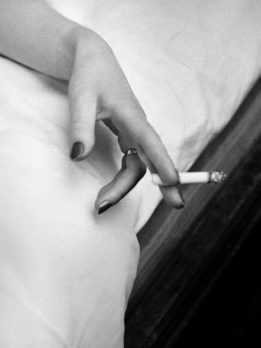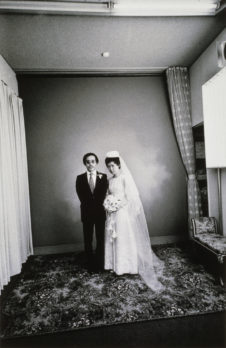Dear Shaded Viewers,
“Love generates, or rather reveals something which may be called absolute charm. In the beloved nothing is gauche. Every move of the head, every tone of the voice, every laugh or grunt or cough or twitch of the nose is as invaluable and revealing as a glimpse of paradise” Iris Murdoch
The Spring 2022 Season at the MEP is about Love with a capital ‘L’: all its possible joys and all its potential tribulations; love in all its complexity and mystery; and all the everyday poetry that love can reveal. The major exhibition Love Songs is a deliberately romantic proposition for rethinking the history of photography, including some of its most celebrated names and landmark bodies of work. The exhibition has been conceived in relation to the old idea of homemade music compilations that (for a certain time at least) people offered to, and exchanged with, their lovers. One reason why Love Songs brings this tradition to mind, albeit visually rather than musically, is the sense of being immersed in the emotional landscapes of people we know (people we love) through the words, ideas and emotions of people that we do not. In choosing a playlist of songs that mean something to us by singers that we admire, we are, in a way, offering the feelings expressed to our lovers as our own. And in doing this very intimate ‘curatorial’ work and sharing it, we permit ourselves to say things that we rarely say, or say ourselves very badly, through a kind of appropriated poetry.
All of the artists in Love Songs and, indeed those chosen for the two Studios for this season, have tried to capture something of the essence of love for themselves with the camera. They have, however, done this not only to show what it means (or meant) to them personally, but also what it might mean for us as viewers. In every case the intimacies revealed rely not only on great photographic artistry, but on the artists’ emotional generosity, the willingness to share with us not only their work, but their lives and loves.
Simon Baker, Director of the MEP and curator of the exhibition Love Songs.
Another history of photography
Love and intimacy have inspired many great artists to produce moving and significant photographic works throughout the 20th and 21st centuries. “Sentimental Journey” (1971) and “Winter Journey” (1989-90) by Japanese photographer Nobuyoshi Araki, and “The Ballad of Sexual Dependency” (1973-1986) by American photographer Nan Goldin are among the most compelling examples of this practice.
Love Songs proposes situating these two series in the context of the work of other major photographers, all of whom have pushed the boundaries of representing intimacy within their practice. Comprising powerful bodies of work by both French and international artists, from the 1950s to the present, the exhibition Love Songs sets out a completely new history of photography.
Catalogue
On the occasion of the exhibition Love Songs, a catalogue is being copublished by the MEP and Atelier EXB. It includes all the series presented in the exhibition as well as Lovesody by Motoyuki Daifu and Another Love Story by Karla Hiraldo Voleau, which are being presented during the same period in the Studio, the MEP’s exhibition space dedicated to emerging artists. Introductory essay by Simon Baker, director of the MEP and curator of the exhibition.
Love Songs, Photographies de l’intime, published by Atelier EXB. Texts in French, hardcover, format 19,5×27 cm, 224 pages, 230 images, €45
A few words on several of the photographers in the exhibition:
Nobuyoshi Araki, Sentimental Journey, 1971 & Winter Journey, 1989-1990
In 1971, Nobuyoshi Araki published his first book, Sentimental Journey, a visual diary of his honeymoon with his young wife Yoko. This book marks Araki’s veritable debut as a photographer. His artistic universe was already in place: in direct contact with day-to-day reality, he both lived it and transformed it into fiction. The photographic act became an everyday, mechanical gesture, and each of the images that emerged found its place in his way of expressing his experience of time. Its explicit sexualised nature has been controversial but it represents one of the first revelations of intimacy in photography.
In 1989, Araki prolonged this series with a second ensemble entitled “Winter Journey”, a photographic essay documenting the death of his beloved wife and the artist’s intense grief.
Born in Tokyo in 1940, Nobuyoshi Araki studied at Chiba University. He began his career by working as a photographer at the advertising agency Dentsu before devoting himself fully to his artistic practice.
Araki documents all the moments of his life: what he sees of the world around him, his intimacy, his obsessions, sex, death and nudity, which he assembles in order to develop a new photographic genre in photography.
His wife Yoko was his muse. Also included in his work are the famous images of Kinbaku (the Japanese art of bondage), as well as series on flowers or his cat, Chiro. During his career, Araki has published more than 500 books, and his work has been exhibited around the world.
Nan Goldin, The Ballad of Sexual Dependency, 1973-1986
Published in 1986, part artwork and part private diary, Nan Goldin’s The Ballad of Sexual Dependency sits squarely on the boundary between art and documentary. Inviting the viewer into her own existence, she depicts her group of friends in spontaneous photographs that reflect the daily life of a community whose members hide nothing: partying, sex, anxiety, drugs, violence, in tender and raw images, with saturated colours.
Nan Goldin focuses on the roles men and women are given in their childhood and the effects they have on love relationships. She questions the limits between autonomy and dependence in couples and evokes the tension that can lead to relationships filled with conflict and often violence.
Born in 1953 in Washington, Nan Goldin revolutionised photography in the 1980s, making her life into her work. “The Ballad of Sexual Dependency” is the iconic and foundational photographic series for her entire body of work. In 1987, she presented the project for the first time in Europe at the Rencontres de la photographie festival in Arles in the form of a slideshow accompanied by a musical playlist. In 2017, MoMA organised an important retrospective of “The Ballad”, with over 700 images from this work.
Throughout her life, she has continued to photograph her loved ones. Her work has been exhibited worldwide.
RongRong&inri, Personal letters, 2000
The Chinese photographer Rong Rong and the Japanese photographer Inri met in 1999. Both accomplished artists, their only common language was photography. When Inri returned to Japan at the end of the year 2000, the two lovers began a fiery correspondence by writing on the edges of the prints they had made together.
The prints from the “Personal letters” series, made in 2000, constitute both the beginnings of their love affair and their first photographic collaboration. The creative process here was fully and equally shared. Alternating moments from everyday life with more sophisticated scenes, playing with symbolic props or glorifying Inri’s eroticized body with the effects of veiled light or colour enhancements. They also photographed each other naked in grandiose landscapes, alone or entwined as if they were one body. These handwritten exchanges of sweet words and promises of eternal love, which were then kept for more than 20 years, have never been shown before.
RongRong was born in 1968 in Zhangzhou, China. Inri was born in 1973 in Kanagawa, Japan, and graduated from the Nippon Photography Institute in Tokyo. This artist couple has been working together since 2000. Their images reflect the intimate world they have created together. Their critically acclaimed series, such as “Mt.Fuji” and “Liulitun” emphasise the relationship of the human body with nature and the urban environment.
In 2007 RongRong&inri founded the Three Shadows photographic art centre in Beijing’s Cochangdi art district. They also established the annual Three Shadows Photography Award, which is intended to help discover and encourage the most promising Chinese photographers.
The 2016 Sony World Photography Awards honoured the couple with an award for Outstanding Contribution to Photography, in acknowledgement of their impact on contemporary photography in China and beyond.
Hideka Tonomura, Mama Love, 2007
Hideka Tonomura and her mother lived together for many years under the influence of a controlling and violent man.
In “Mama Love”, the artist took photographs in a hotel room documenting her mother’s adulterous lovemaking and her newfound freedom. While developing the prints, the artist became aware for the first time of her mother’s frontal gaze, her expression of vengeance and rebellion. It became clear to her that this affair was less a meaningful long-term relationship than a quest for happiness. She decided to obliterate the lover and transform his male body into a dark mass, blackening it by literally “burning” it in the darkroom.
Born in 1979 in Japan, Hideka Tonomura started photography in 2002. She published Mama Love, her first book, in 2008. In 2013, she published They called me Yukari, in which she documents her sexual experiences and her new life in Tokyo while working as a hostess in a bar, fragments of stolen images taken by the young woman who goes by the name of Yukari.
Actively presenting her work in Japan and abroad, her recent publications include Orange Elephant (Zen Foto Gallery, 2015), Cheki (Morel Books, 2018) and Die of love (Zen Foto Gallery, 2018).
After being diagnosed with cancer in 2019, Hideka Tonomura founded the “Shining Woman Project”, a portrait project dedicated to women fighting the disease
Later,
Diane
MEP
Maison Européenne de la Photographie
5/7 rue de Fourcy 75004 Paris
+33 (0)1 44 78 75 00 – mep-fr.org M° Saint-Paul (line 1) or Pont Marie (line 7)
Opening hours Wednesday and Friday from 11 am to 8 pm Thursday from 11 am to 10 pm Saturday and Sunday from 10 am to 8 pm* Ticket office open till 7:30 pm Closed on Monday and Tuesday * Only for MEP members on Sunday 10 am to 11 am Admission fee Full price: €10 Reduced price: €6 Pass MEP*: €40 Pass MEP* 18-30: €25 Pass MEP* Donor: €120 *Pass for two people for an entire year











